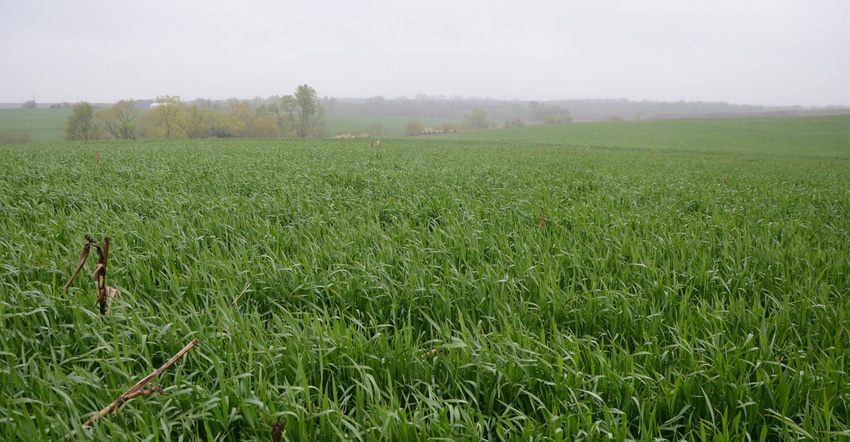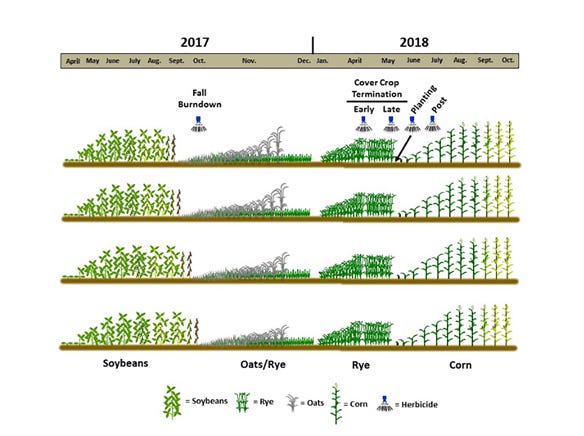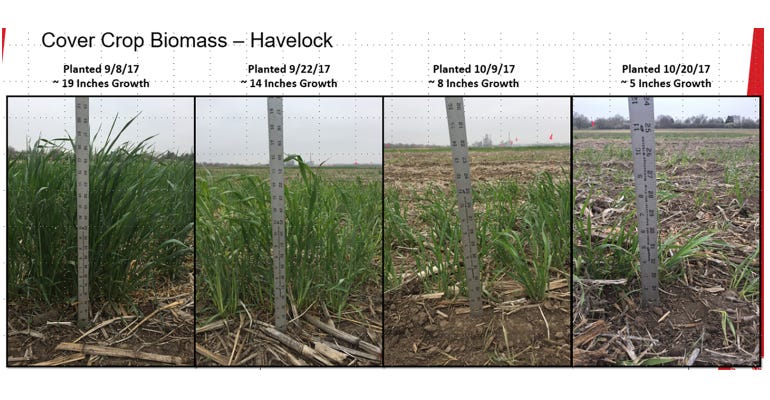January 11, 2019

By Chris Proctor
and Josh Wehrbein
Cover crops are a growing component of the Nebraska agricultural landscape. Many farmers use cover crops for potential benefits such as soil erosion control, postseason capture of plant available nutrients and improved soil health.
Cover crops also have been shown to be effective at suppressing weeds in many agricultural systems. However, results are not always consistent and often depend upon several variables, including environmental factors, weed species present and management practices used.
As weed suppression is highly related to cover crop biomass production, producing adequate biomass production can be a challenge in Nebraska corn-soybean crop rotations as the growing season after harvest is relatively short.
One approach to extend the fall growing season for cover crops is by using shorter-season corn or soybean maturity groups. This concept has been effectively used in the mid-South but has not been well utilized in the Midwest.
A study by Nebraska Extension aimed to determine the effect of soybean maturity group yield, cover crop planting date, termination date and herbicide programs on winter- and summer-annual weed suppression in a corn and soybean cropping system.
Field trials were conducted in 2017-18 at the University of Nebraska's Havelock Research Farm near Lincoln, where a cereal rye and oat mix was planted at 80 pounds per acre.

TIMING PLAYS A ROLE: Four cover crop planting dates and two termination dates were studied as part of the trials to evaluate their effect on weed control.

Four cover crop planting dates were used after soybean harvest:
• Sept. 8
• Sept. 22
• Oct. 9
• Oct. 20
Two termination dates were used before corn planting.
• April 10
• April 27
Herbicide treatments included:
• Fall burndown (Clarity 16 fluid ounces per acre) plus spring preemergence (Acuron 3 quarts per acre plus glyphosate 32 ounces per acre) plus postemergence (Status 10 ounces per acre plus glyphosate 32 ounces per acre)
• Spring preemergence (Acuron 3 quarts per acre plus glyphosate 32 ounces per acre) plus postemergence (Status 10 ounces per acre plus glyphosate 32 ounces per acre)
Postemergence (Status 10 ounces per acre plus glyphosate 32 ounces per acre)

BIOMASS PRODUCTION: Cover crop biomass for four planting dates in the 2017-18 trials.
Results from the first year of the study indicate:
• Cover crop planting and termination date had no effect on weed biomass or weed density.
• Herbicide treatments containing a fall burndown did not reduce weed density or biomass more than spring preemergence treatments, but both reduced weed density and biomass more than the control before the postemergence application.
• Fall burndown and spring preemergence treatments also provided greater weed control than postemergence-only treatments three weeks after the postemergence application.
• There was no difference in soybean yield for maturity group 2.0 and higher.
Results indicated cover crops may not always be successful at providing effective weed suppression. Managing weeds when they are small and using a spring residual or fall-applied herbicides may be necessary to provide adequate weed control for the duration of the growing season. There also is potential to use earlier maturity group soybeans to increase the fall season for cover crop establishment and growth without detrimentally affecting yield.
Proctor is a Nebraska Extension weed management educator. Wehrbein is a graduate research assistant at the University of Nebraska-Lincoln.
This report comes from UNL CropWatch.
You May Also Like




